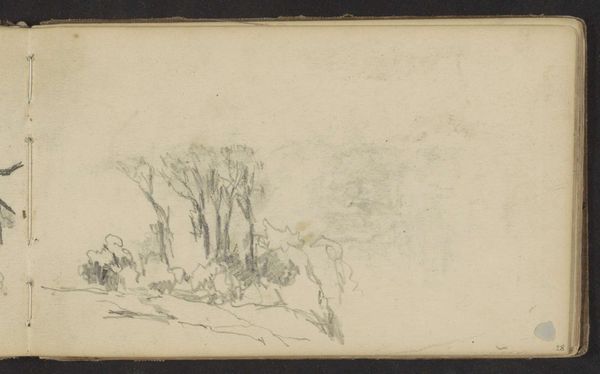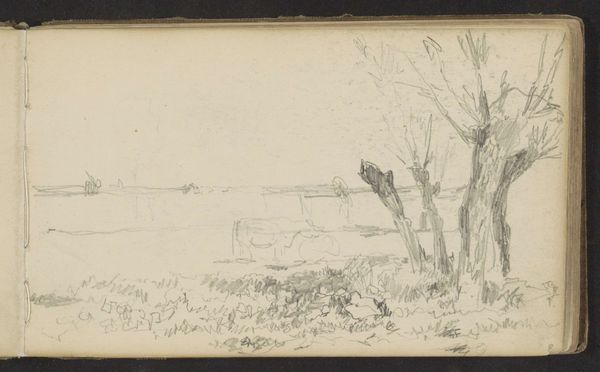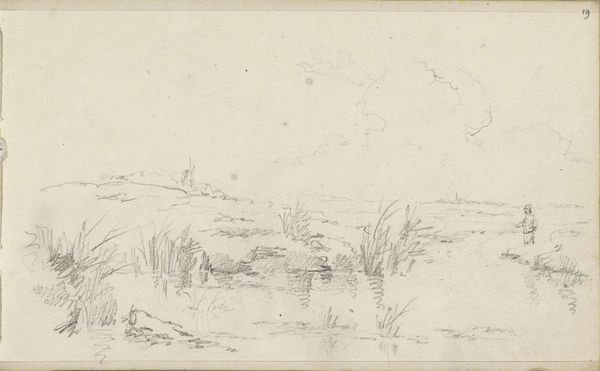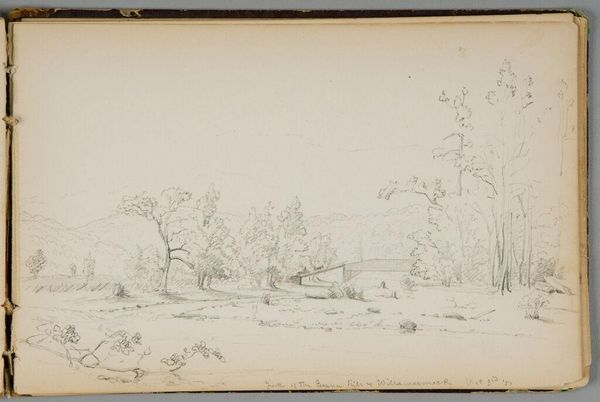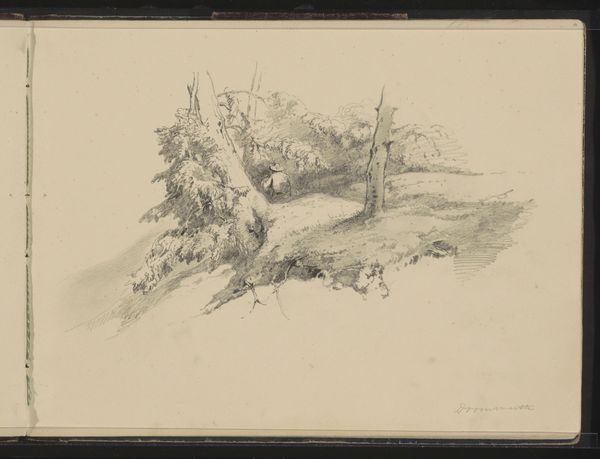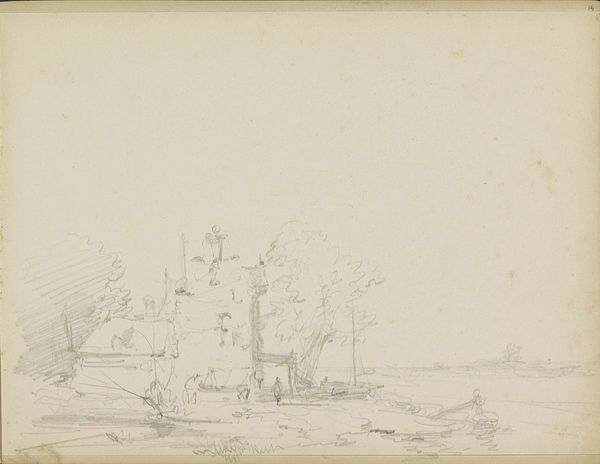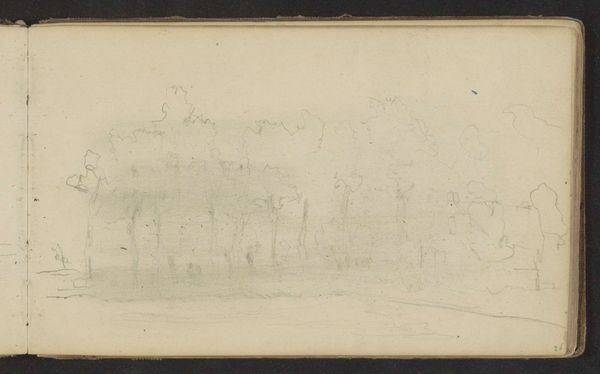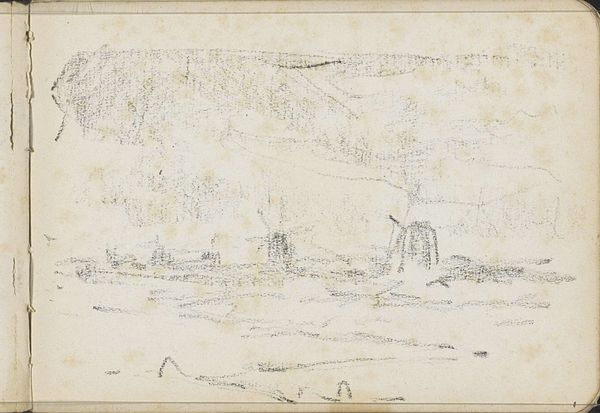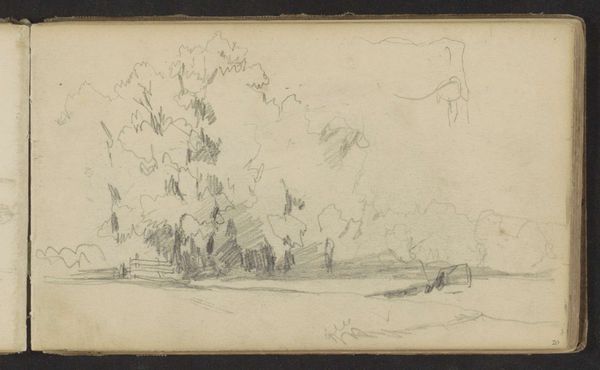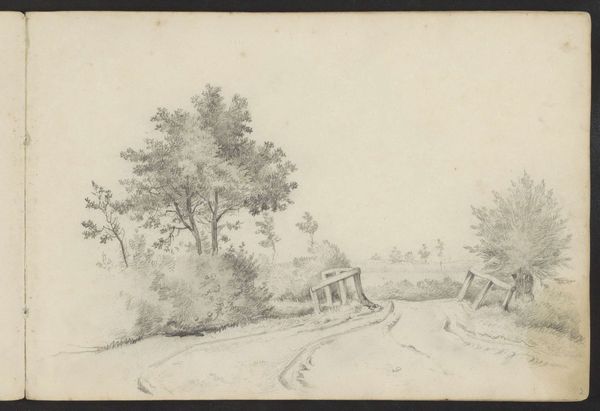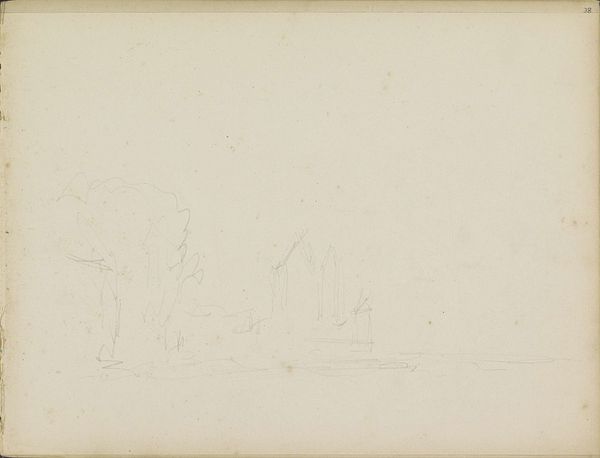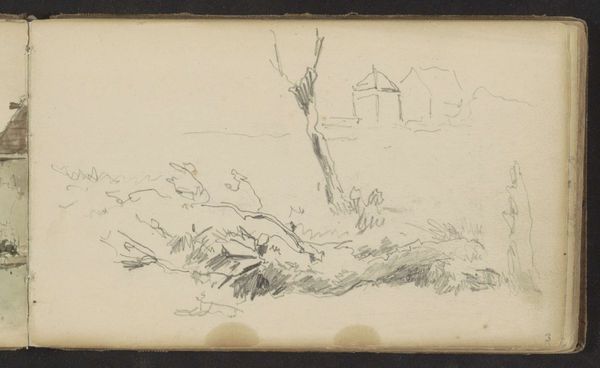
drawing, paper, pencil
#
drawing
#
landscape
#
paper
#
pencil
#
realism
Copyright: Rijks Museum: Open Domain
Editor: So, here we have "Weiland met bomengroep en hek," a landscape drawing done in pencil on paper, by Johan Hendrik Weissenbruch, sometime between 1834 and 1903. It feels quite sparse, almost desolate. I'm curious, what stands out to you in this seemingly simple composition? Curator: The apparent simplicity is deceptive. Look at the material reality here: pencil on paper. This isn’t some grand oil painting; it’s a study, a sketch. We must ask: what kind of paper? What grade of pencil? These choices reflect a deliberate artistic decision regarding ease of portability, cost, and intended audience. Editor: Interesting. It does seem practical, like a field study. How does that inform the way we should understand it? Curator: The fact that this drawing was likely created en plein air—outdoors, directly from the landscape—is critical. Consider the social and economic context. What kind of access did Weissenbruch have to these landscapes? How does the accessibility and cost of materials impact who gets to depict these landscapes? The act of drawing itself becomes a form of engagement with the environment, conditioned by class and privilege. Editor: So, you're saying the value lies not just in what's depicted, but how and why? The labor of landscape and its cultural implications. Curator: Precisely. The rapid strokes suggest a quick study, but also perhaps reflect the rhythms of rural life and the changing landscape itself due to forces of labor and industry. Is that fence about enclosure and property? A site for the production of food? By understanding its making, its materials, and its context, we can reveal a broader network of meaning beyond just "a pretty picture." Editor: I never thought about it that way, but now I see so much more embedded in what seemed like a simple sketch. Thanks! Curator: It's always a dialogue between object and context. Thinking materially lets us unpack the unspoken assumptions behind every artwork.
Comments
No comments
Be the first to comment and join the conversation on the ultimate creative platform.
